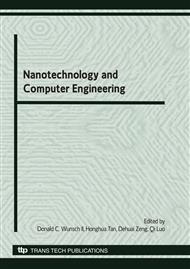p.1006
p.1012
p.1018
p.1023
p.1028
p.1033
p.1038
p.1044
p.1048
A Fragile Information Hiding Technique Based on Human Visual Gray Sensitivity
Abstract:
Based on human visual gray sensitivity, a fragile large capacity spatial domain information hiding algorithm, and a new calculation formula of image peak signal-to-noise ratio were put forward. An adaptive embedding method was proposed, which had the minimum visual gray sensitivity when massive information were hidden into an original image. Experiments showed that this algorithm had massive amount of embedded information and excellent masking properties, and what’s more, once there is a bit tampered randomly, the watermarking image could not be recovered correctly. So it was suitable for the situation where the received information must be very strict reliably.
Info:
Periodical:
Pages:
1048-1051
Citation:
Online since:
June 2010
Authors:
Price:
Сopyright:
© 2010 Trans Tech Publications Ltd. All Rights Reserved
Share:
Citation:


